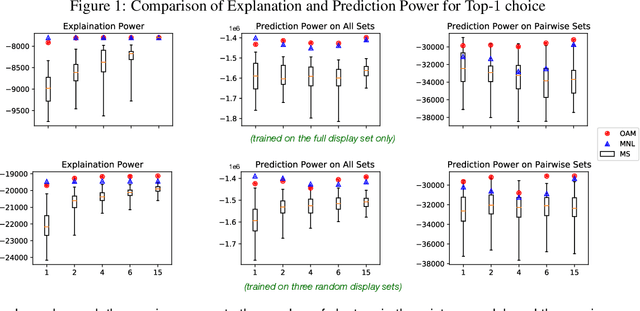On A Mallows-type Model For Choices
Paper and Code
Jul 05, 2022

In a preference learning setting, every participant chooses an ordered list of $k$ most preferred items among a displayed set of candidates. (The set can be different for every participant.) We identify a distance-based ranking model for the population's preferences and their (ranked) choice behavior. The ranking model resembles the Mallows model but uses a new distance function called Reverse Major Index (RMJ). We find that despite the need to sum over all permutations, the RMJ-based ranking distribution aggregates into (ranked) choice probabilities with simple closed-form expression. We develop effective methods to estimate the model parameters and showcase their generalization power using real data, especially when there is a limited variety of display sets.
 Add to Chrome
Add to Chrome Add to Firefox
Add to Firefox Add to Edge
Add to Edge